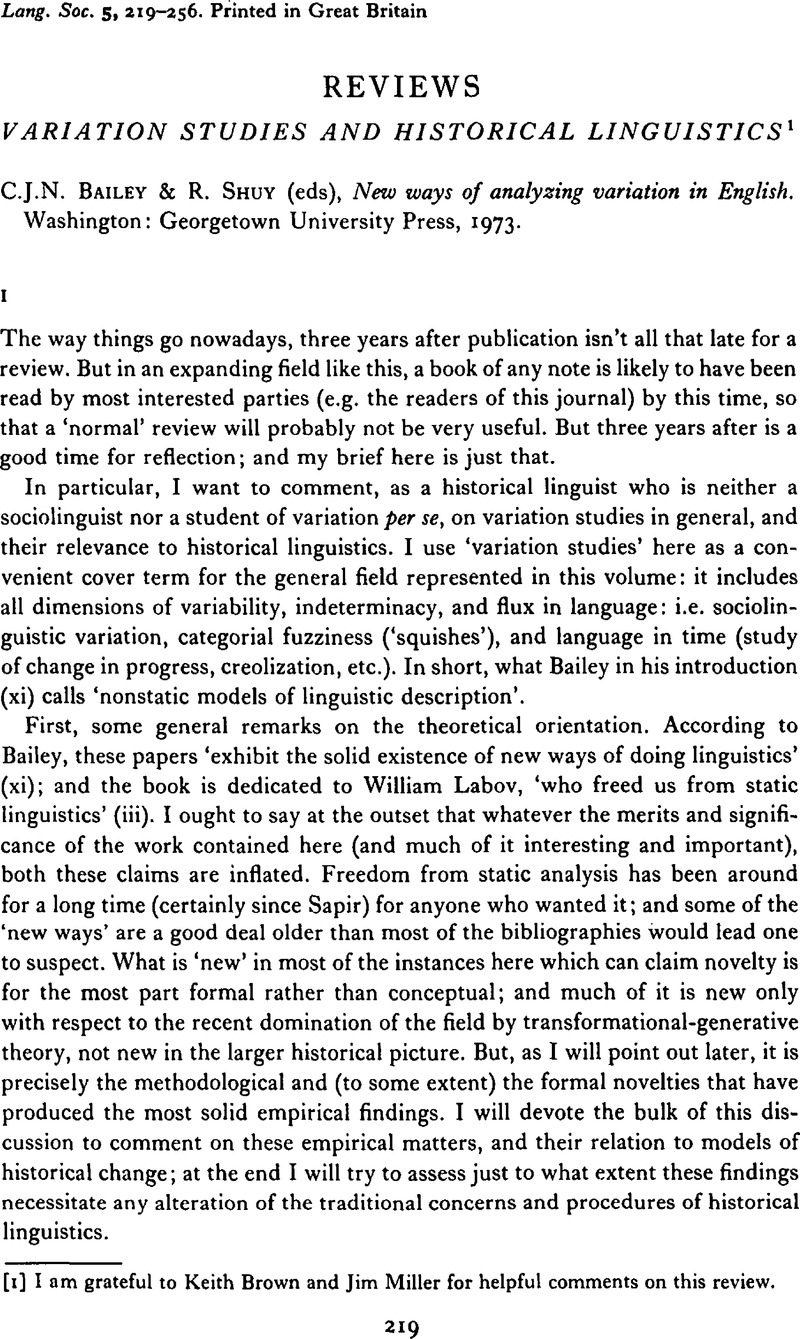Crossref Citations
This article has been cited by the following publications. This list is generated based on data provided by Crossref.
1982.
REVIEWS.
Folia Linguistica Historica,
Vol. 16,
Issue. Historica vol. 3,2,
Southworth, Franklin C.
1990.
Research Guide on Language Change.
p.
25.
Wosnitza, Sibylle
1990.
Review of Devitt (1989): Standardizing Written English. Diffusion in the Case of Scotland 1520–165.
English World-Wide. A Journal of Varieties of English,
Vol. 11,
Issue. 2,
p.
300.
Deumert, Ana
2003.
Bringing speakers back in? Epistemological reflections on speaker-oriented explanations of language change.
Language Sciences,
Vol. 25,
Issue. 1,
p.
15.
Zhang, Ze Shun
2013.
Semantic Map Model and Construction of Synset.
Advanced Materials Research,
Vol. 756-759,
Issue. ,
p.
2484.





